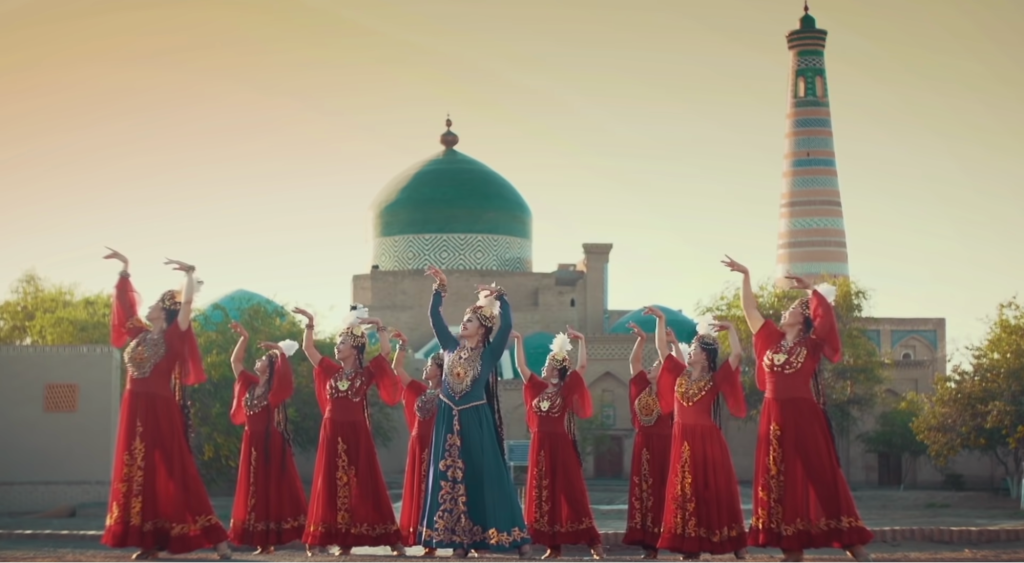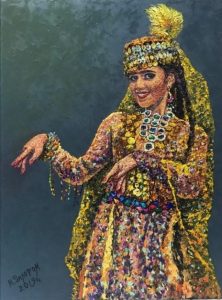
In the heart of the sunny country of Uzbekistan exists a dance with a rich history dating back 3 millennia, known as UNESCO’s sunniest dance on Earth. An ancient dance with captivating storytelling and myths. The most famous dance of Central Asia.
Lazgi: The National Dance of Cultural Importance
Lazgi is the national dance of Uzbekistan that stemmed from the historic city of Khorezm, also known as Khiva, where my Khorezmian-Türkmen grandfather, from my father’s side, is from with most of my ancestors from that side of my family.
It is an ancient dance that dates back to the 11th century BCE, created by Khorezmians, inhabitants of the Amu-Darya River. Lazgi’s derived from Zoroastrianism, one of the oldest religions known for worshipping fire and the sun that predates Islam, the current religion of Uzbekistan.
In modern Uzbekistan, there are nine forms of the Lazgi dance and over 101 Lazgi song reiterations. Weddings and other gatherings in Uzbekistan aren’t complete without Lazgi being sung and danced to at least once. In 2019, Lazgi was recognized in the UNESCO Representative List of the Intangible Cultural Heritage of Humanity.
The Zoroastrian Legend
The history of Lazgi was explained in the music video Lazgi Afsonasi by Hulkar Abdullaeva. To summarize, legend has it that God created a human body that He couldn’t bring to life because the soul refused to enter the body. Everything changed once the soul heard a charming melody that entered the body, evidently bringing it to life.
The Shah of Khorezm’s Mistress
This is the reason Lazgi starts with a slow introduction. A dancer takes a static pose with the arm raised, directed to the sun (as pictured). As the song accelerates, so does the body at a lightning pace. Lazgi signifies moving toward the sun because, with each movement toward the sun, we can absorb the sun’s rays into ourselves.
A different tale of Lazgi has been passed down, one that may have more accurate historical ties to the region. One day, the Shah of Khorezm grew bored and desired entertainment through dance. He chose one of his mistresses with the most grace, but once she started the dance, she suffered a harsh fall due to one of his other mistresses throwing beads toward her feet out of spite. Although she fell, she persevered and danced for the Shah. Hence, the dance means tremble. The dancer was trembling because she had just suffered a harsh fall. Dancers tremble when dancing Lazgi. The story is seen in the video Xorazm lazgisi by Uzbek dancer Parizoda.
A Melody with No Words
For centuries, Lazgi was only danced to without words to the song. No one dared to add words since the melody was so complex that it was too difficult. It wasn’t until the legendary late Khorezmian singer Komiljon Otaniyozov put words to the song in the 60s, from the poem by Komil Khorezmi, that people started singing words to Lazgi. As the radiant sun releases its rays upon Uzbekistan, Lazgi will continuously be the well-known dance with more myths and stories to tell. For the future centuries and millennia, Lazgi will always be the most beloved dance in all of Uzbekistan for many generations to come.
